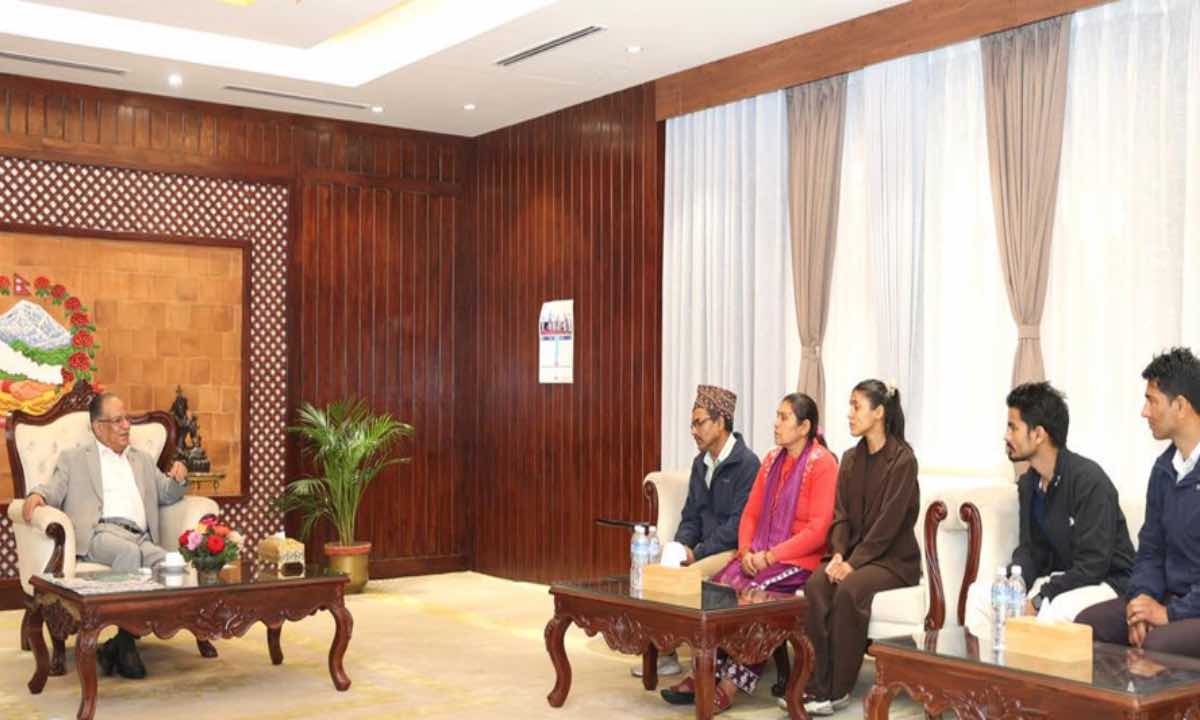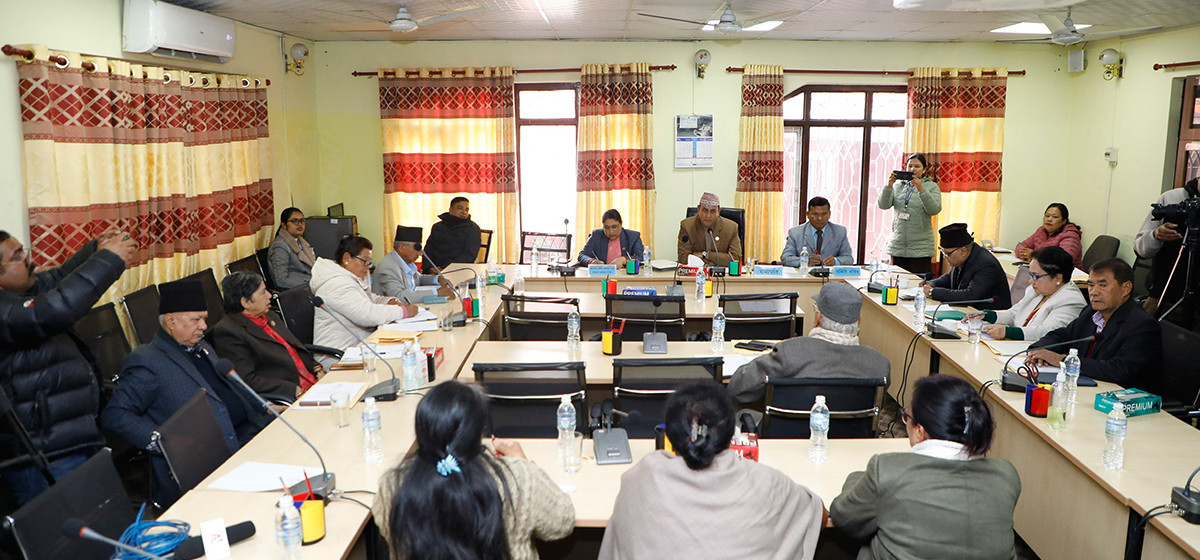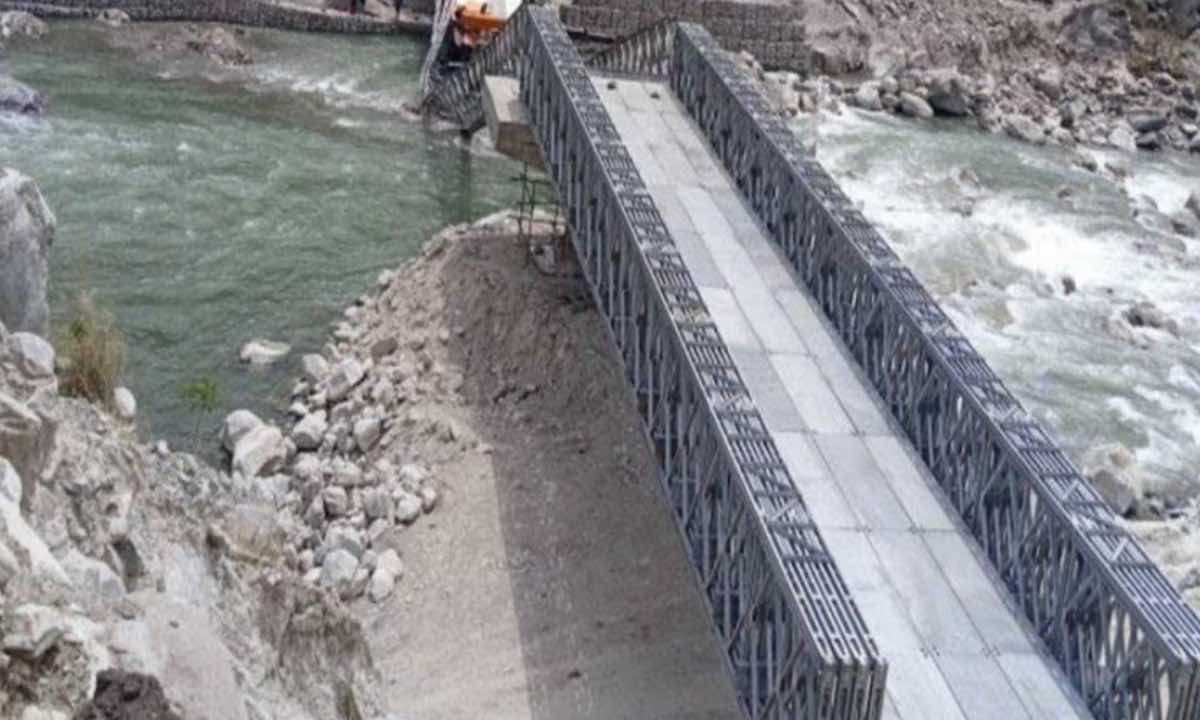
OR
More from Author
- DPM Shrestha pushes for Nepal-Tibet-Chongqing-Sichuan Development Corridor
- Nepal-China agree to conclude BRI Implementation Plan 'soon' as Beijing presses for swift implementation of BRI projects
- PM Dahal solicits UML support for new alliance amidst deepening mistrust with NC
- WTO 13th Ministerial Conference ends without consensus on issues related to agriculture and fisheries
- Nepal reiterates its call for continuation of int'l support measures as it prepares for LDC graduation in 2026
The geostrategic rebalancing in the Asia Pacific region has put Nepal’s long-held non-aligned foreign policy to test
The relation between India and the US has shifted after Indian Prime Minister Narendra Modi assumed office in May, 2014. The two countries recently concluded a number of key agreements, mainly on defense and security cooperation. Washington now recognizes New Delhi not only as a Major Defense Partner, but also as an ally, ostensibly to contain a ‘rising China’. The foreign policy departure of New Delhi from “non-alignment” to “strategic alignment” with the US carries profound implications for the geostrategic stability of South Asia. The region could now be a major theater of big-power rivalry.
While India is already wary of Beijing’s engagements in its strategic backyard through a number of measures including the much-touted “One Belt, One Road” and “Maritime Silk Road” initiatives, the latest Indo-US defense cooperation pacts are likely to make Beijing even more assertiveness in the region. The strategic alignment between India and the US leaves Nepal as well as other small countries that otherwise depend heavily on New Delhi with the challenge of pulling off a delicate balancing act between India and China, for their security as well as economic interests.
Non-alignment over
The relation of post-independent India and the US was strained till the end of the 20th century. India cultivated strategic and military relations with the then USSR to counter potential security threats; the US, meanwhile, chose to make Pakistan its strategic ally in South Asia shortly after India’s and Pakistan’s independence. Wary of the Cold War power-play between the US and the USSR, India later became a founding member of the Non-Alignment Movement, even though India didn’t severe its strategic military relation with the USSR. The relation between the two oldest and largest democracies reached the lowest ebb when the US supported Pakistan in the 1971 war over Kashmir.
The rekindled bonhomie between the two countries mainly after New Delhi started negotiating the civil nuclear deal with Washington in 2005 culminated last week in major defense cooperation pacts, marking a significant development in their bilateral relations.
Washington now recognizes New Delhi as a Major Defense Partner, and one of its allies in the Asia Pacific and Indian Ocean region, purportedly to counter China’s military assertiveness. The two countries have agreed to enhance military to military cooperation, and to expand co-production and co-development of technologies under the Defense Technology and Trade Initiative that covers naval, air, and other weapons systems. While the US will facilitate export of goods and technologies to India in support of official US-India defense cooperation, a Joint Working Group on Aircraft Carrier Technology Cooperation will also be formed soon. Among other things, the US has pledged support to India’s accession to the Nuclear Supplier’s Group (NSG) which, once approved, will give New Delhi an access to defense, space and nuclear technologies. In essence, the Indo-US defense pacts mark New Delhi’s departure from its policy of “non-alignment” with any big powers to “strategic alignment” with the US, and also indicate its readiness to join the US-led efforts to balance China after years of ambivalence.
Brewing tensions
Although it is too early to predict how China will respond to India’s strategic move, initial indications are that relation between New Delhi and Beijing is going to deteriorate despite their increased trade in recent years. India has been wary of Beijing’s deepening engagement in the areas New Delhi considers its strategic backyard through a number of Chinese strategies including the “One Belt, One Road” and the “Maritime Silk Road” initiatives. The already troubled relation between the two countries further soured after Beijing in April made a UN Committee put a “technical hold” on New Delhi’s application to include Pathankot terror attack mastermind Maulana Masood Azhar, the chief of Pakistan-based Jaish-e-Mohammed, in the UN sanction list.
Much to the chagrin of New Delhi, Beijing continues to stymie its bid for permanent membership of the UN Security Council. Recently, Beijing also foiled New Delhi’s bid, one which was backed by the US, to acquire membership of Nuclear Suppliers’ Group (NSG) during the group’s meeting in Vienna. This indicates that the tension between these two behemoths is quietly growing. On the other hand, Beijing is already irked by the joint naval exercises that India, the US and Japan have started in the Sea of Japan near disputed islands claimed by both China and Japan. Considering that India and China already share longstanding territorial disputes, and even fought a brief war in 1962, New Delhi’s strategic move is likely to jeopardize the geostrategic stability of South Asia in the days ahead.
For small fries
The troubled relation between these two regional powers does not augur well for smaller South Asian countries like Nepal. The evolving geo-political rebalancing forces these countries, otherwise heavily dependent on New Delhi, to either support the policy of containing China or, alternatively, to seek constructive engagement with China. So they have a delicate balancing act to pull off. As India joins the US and its allies to contain China, Beijing will only grow more assertive in New Delhi’s strategic backyard. Under such circumstances, the best policy option for these small countries is to seek constructive engagement with Beijing. This helps them not only to do away with their “security dilemma”, but also to keep their doors open to exploit economic opportunities that Beijing may offer.
Although policymakers and the strategic community in New Delhi seem convinced that the alignment with the US is a fitting response to Chinese ‘assertiveness’, in reality it is only likely to further destabilize South Asia to India’s economic and strategic loss. In fact, China started becoming assertive in India’s neighbors after New Delhi sought to align itself with Washington, especially after it reached the civil nuclear deal in 2008. Since, China has made greater inroads into South Asia through its various soft power strategies. This includes not only public diplomacy but also economic levers like trade, aid and investment in major infrastructure projects. Nuclear-armed Pakistan has been a long-time ally of China in South Asia. The way Nepal, Sri Lanka, Bangladesh and the Maldives have welcomed Chinese overtures over past few years indicates that they are also unlikely to give up their constructive engagement with China. Thus China’s strategic presence in South Asia is bound to grow unless New Delhi rethinks its coercive diplomacy in the neighborhood and seeks to regain its soft power.
Nepal’s future
How India will assuage the “security dilemma” of its small neighbors and handle its ties with China after its recent defense pacts with the US is something to be seen. South Asia’s prosperity and stability depend on India’s ability to assuage the concerns of its neighbors including China, and winning back their confidence. Locked between these two giant neighbors that perceive each other as geo-strategic rivals, Nepal on its part needs to take security concerns of both India and China seriously.
The latest effort of Prime Minister KP Oli to reorient Nepal’s India-centric neighborhood relation and seek balanced relations with both the big neighbors is a step in the right direction. There is no going back. The evolving geostrategic rebalancing in the Asia Pacific has already put our long-held non-aligned foreign policy to the test. It’s high time that our policymakers recognize that Nepal’s future lies not in aligning with any big power to the north or the south, but in finding a middle way.
The author is pursuing a Masters in international relations at the University of Leeds, UK
@KoshRKoirala
You May Like This

Whither business leaders?
If our businesses fail to note how the ground has shifted in Nepal, soon there will be nothing left for them... Read More...

Whither research?
Unlike in India and China the universities in Nepal don’t publish any quality journals ... Read More...

Whither economic revolution?
KATHMANDU, Sept 20: The country is celebrating first anniversary of the promulgation of the new constitution. One year on, the constitution... Read More...





Just In
- Gold price increases by Rs 700 per tola
- Fire destroys wheat crop in Kanchanpur, Kailali
- Bipin Joshi's family meets PM Dahal
- State Affairs and Good Governance Committee meeting today
- Gold items weighing over 1 kg found in Air India aircraft at TIA
- ACC Premier Cup semi-final: Nepal vs UAE
- Sindhupalchowk bus accident update: The dead identified, injured undergoing treatment
- Construction of bailey bridge over Bheri river along Bheri corridor reaches final stage














Leave A Comment